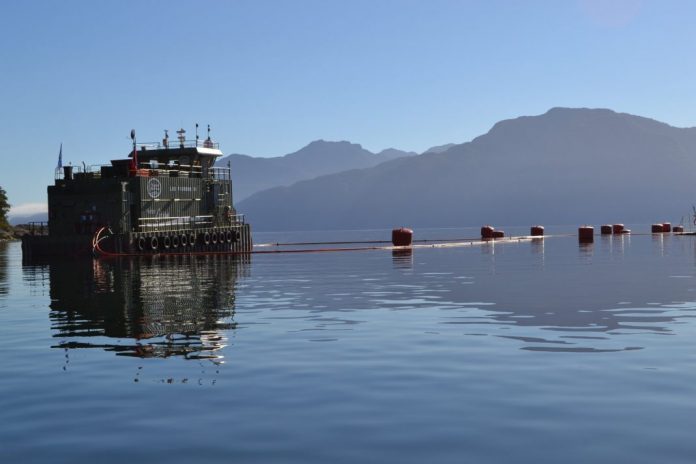The boss off the industry group SalmonChile estimates around 52,000 tonnes of salmon are on frozen stock in Chile right now. 40,000 tonnes is coho salmon, which should have been delivered to Japan.
“There is frozen storage, where the majority is coho salmon for the Japanese market. Right now there is 40,000 tonnes of coho salmon frozen down,” said Arturo Clément, CEO of SalmonChile, to SalmonBusiness.

Arturo Clément explained, that the stock is larger than usual, and this is due to a bigger harvest in the summer of 2019, and that the Japanese market has been challenging to reach, because of the COVID-19.
For a while there has been speculations about larger amounts of salmon on freeze in Chile. Wednesday Mowi CEO Ivan Vindheim broke the silence and informed, that the Chilean frozen stocks are filling up, and this is challenging the Chilean salmon industry both now and will in the long run.
To the statement from the Mowi boss, on increasing amounts of salmon on freeze, Arturo Clément stated:
“Probably yes, this is right. Because some parts of the harvest have been kept on the farms. So during the balance of this year we should have more than normally.”
Atlantic Salmon on storage
Chile is the second largest farmer of Atlantic Salmon, following Norway. In regards to how much Atlantic Salmon is on stock at the moment, Arturo Clément said he was more unsure.
“I don’t think it will be a big quantity. But in any case, it will not be 40,000 tonnes. I estimate we could probably have 10-12,000 tonnes of Atlantic Salmon on stock,” he said.
What is the normal average stock of frozen Atlantic Salmon compared to now?
“It is a little bit bigger now. But the Japanese market is in a very good position. So it is a mater of time. We keep track on a weekly basis, so we believe the market will be in full recovery soon. The storage will be consumed in the coming months. I don’t see any problems with this,” said Arturo Clément, explaining:
“Now we are operating almost as normal. The main challenge is not in our hands. It depends on, how the recovery of the market will be. We are waiting for normality to come. We hope for this in the coming months.”
On top of the increased number of coho and Atlantic salmon in frozen stock, must be added the amounts of trout frozen down. In 2019, harvest volume of trout in Chile was 83,900 tonnes of trout, according to numbers from Kontali. Most of this was frozen trout.
Lower earnings on larger salmon
Right now, The price on Chilean salmon is at its lowest in three years. A possible trigger might be an increased amount of larger salmon, because of extended production periods at the farms.
Many salmon companies in Chile had logistic challenges in the first few weeks of April, and were therefore forced to keep stock for longer in the water. This has and will also affect the price on larger salmon, as the quantity of bigger salmon(+6 kg) is larger than usual.
“Well, we saw a downgrade on prices the last few weeks. We don’t know how long that will be. The US market is still challenged with all of the Horeca segment being closed, so we are only operating with retail. Part of the demand that usually goes to the food service is relocated 100 per cent to retailer. This influences the price on larger salmon,” said Arturo Clément.
Freeze
SalmonBusiness asked several large salmon players what their current frozen inventory for salmon (Coho and Atlantic) and trout and what their capacity was. None would comment on the precise numbers.
AquaChile, the world’s second largest salmon farmer, produces 200,000 tonnes of fish a year. A spokesperson said the company could not share its “production, processing or freezing capacities, because it complies with its strict compliance program in free competition”.
Nova Austral exports 30,000 tonnes a year, primarily sold in the US market. They did not answer how much it was freezing, but rather that “frozen stock costs have not increased and we don’t have problems in this regard”.
Seafood analyst from Pareto, Carl-Emil Kjølås Johannessen says it is difficult to say precisely how much salmon is frozen.
“However, current levels are probably 10-30,000 tonnes above the “normal” levels,” he wrote to SalmonBusiness in a mail.
Mowi Chile and Salmones Camanchaha told SalmonBusiness that it is sending a response.

